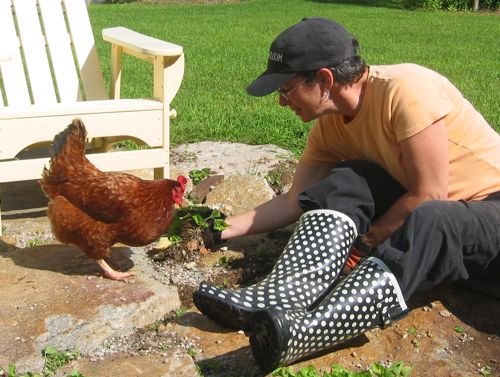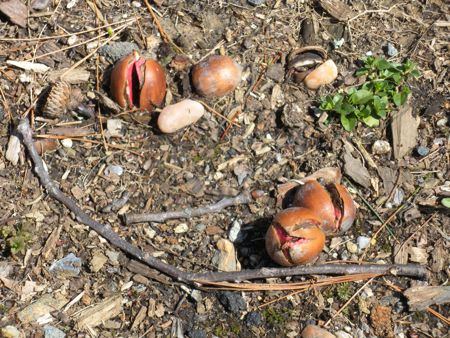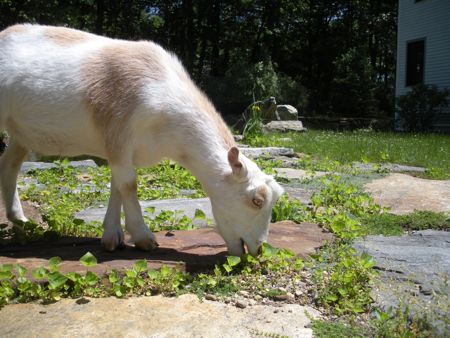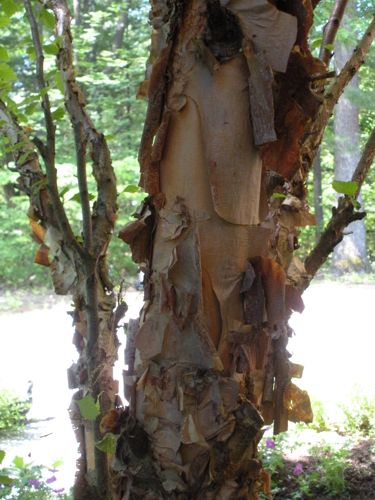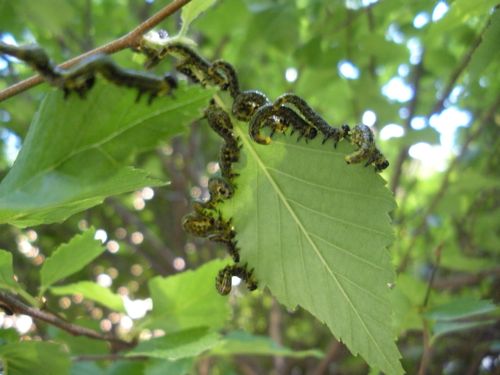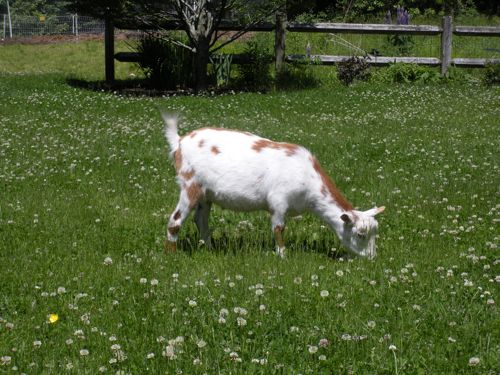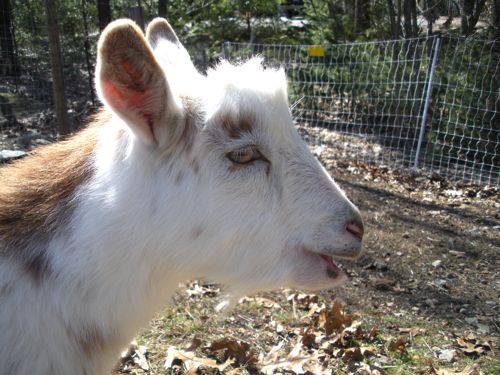Dr. Meade used the process of elimination to come up with a diagnosis of a fungal infection on Candy’s ears. He took a skin scraping, looked under the microscope, and didn’t see mites or lice. But, the white, dry, lumpy skin on her ears sure looked like an external issue. There wasn’t a test for fungus, but that was the logical conclusion and to go ahead and treat for it. If it didn’t clear it up, then there were some serious systemic issues, perhaps an auto-immune disease.
Fortunately, the daily ear washings (with a special disinfectant) and applications of fungicide are working! Candy’s ears are becoming more pliant and the skin is turning a healthier pink. The medicine stings where the skin is raw, and Candy hates the smell of it (which also masks the aroma of the banana chips, so she doesn’t get a treat immediately). In a few days, I think she’ll be ready to go outside.
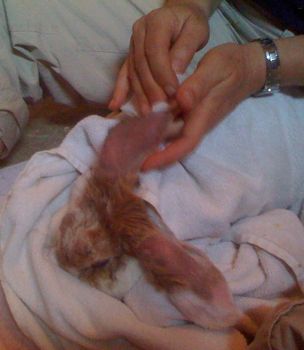
Domestic animals have been bred for centuries (and some for millennium) to suit our needs. Dairy animals produce more milk than necessary for their own offspring, so that we can use it, too. Sheep have fine wool, beef cattle put on muscle, border collies herd. Horses fly over five-foot fences. King Cavalier Spaniels are gentle dogs. But, we also breed animals solely for the looks of them – chickens with tail plumes, guinea pigs with long fur, and dogs with spots. Sometimes those looks come with problems.Those cute domino markings on Dalmatians are linked to deafness. I have a friend with a delightful Boston Terrier, but because of its smushed-in nose, it snorts and has almost no sense of smell.
Lop-eared bunnies are prone to ear infections.
We, the breeders and buyers of these animals are responsible for the bad along with the good. Knowing what I do now, I don’t think I’d purchase another lop. Candy is a sweetheart, but so are rabbits with upright ears – ones that can regulate body temperature and stay out of the muck.
There’s no black and white answer. I firmly believe in keeping domestic farm animals and pets. I especially support the efforts to maintain rare breeds. But, in the last century, stud books have closed, the genetic pool has shrunk, and consumer’s tastes have become more extreme. Take a look at illustrations of pugs from the 1800’s. Their snouts were more prominent, their eyes less bulgy (and therefore less prone to injury and disease,) and yet they were wonderful, family dogs. Breeders and pet-owners need to think through what the costs to the animals are to breeding for looks alone.
